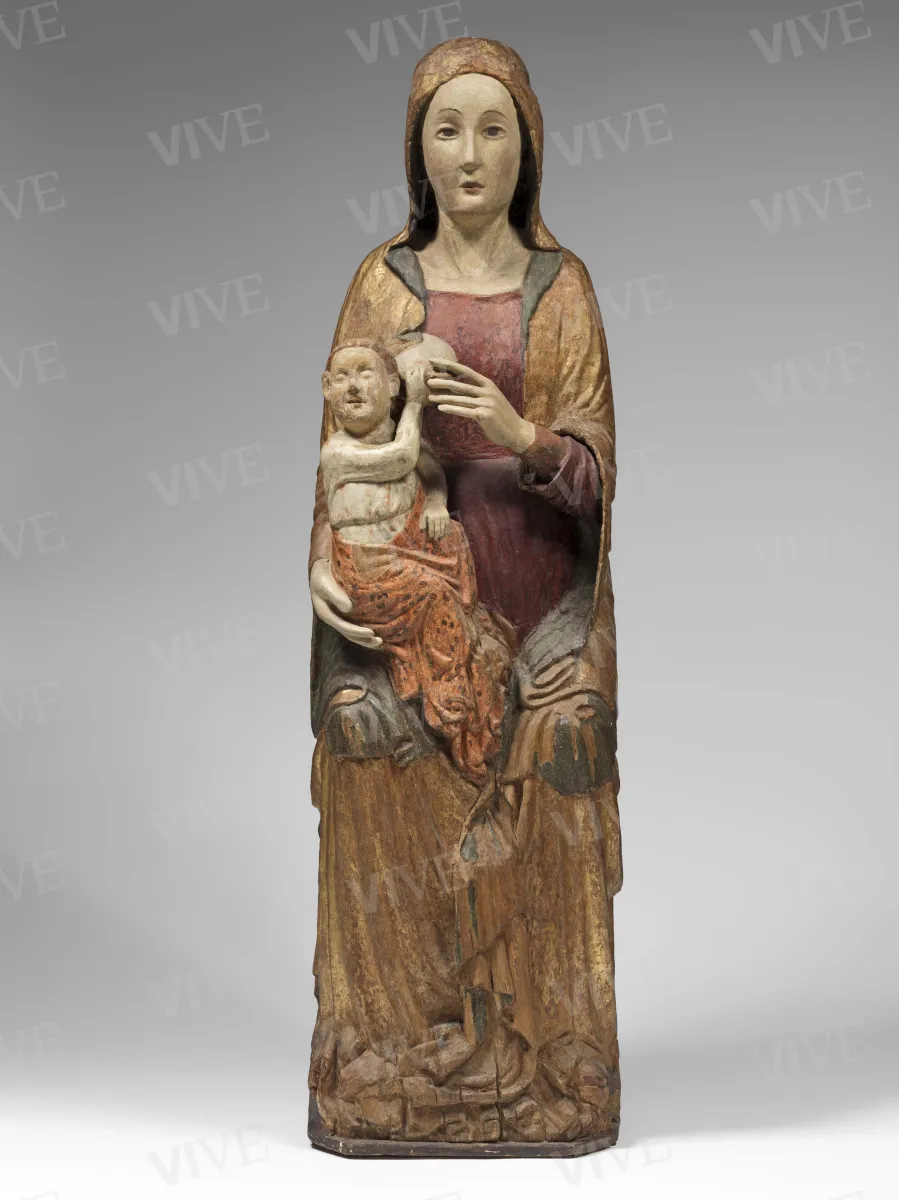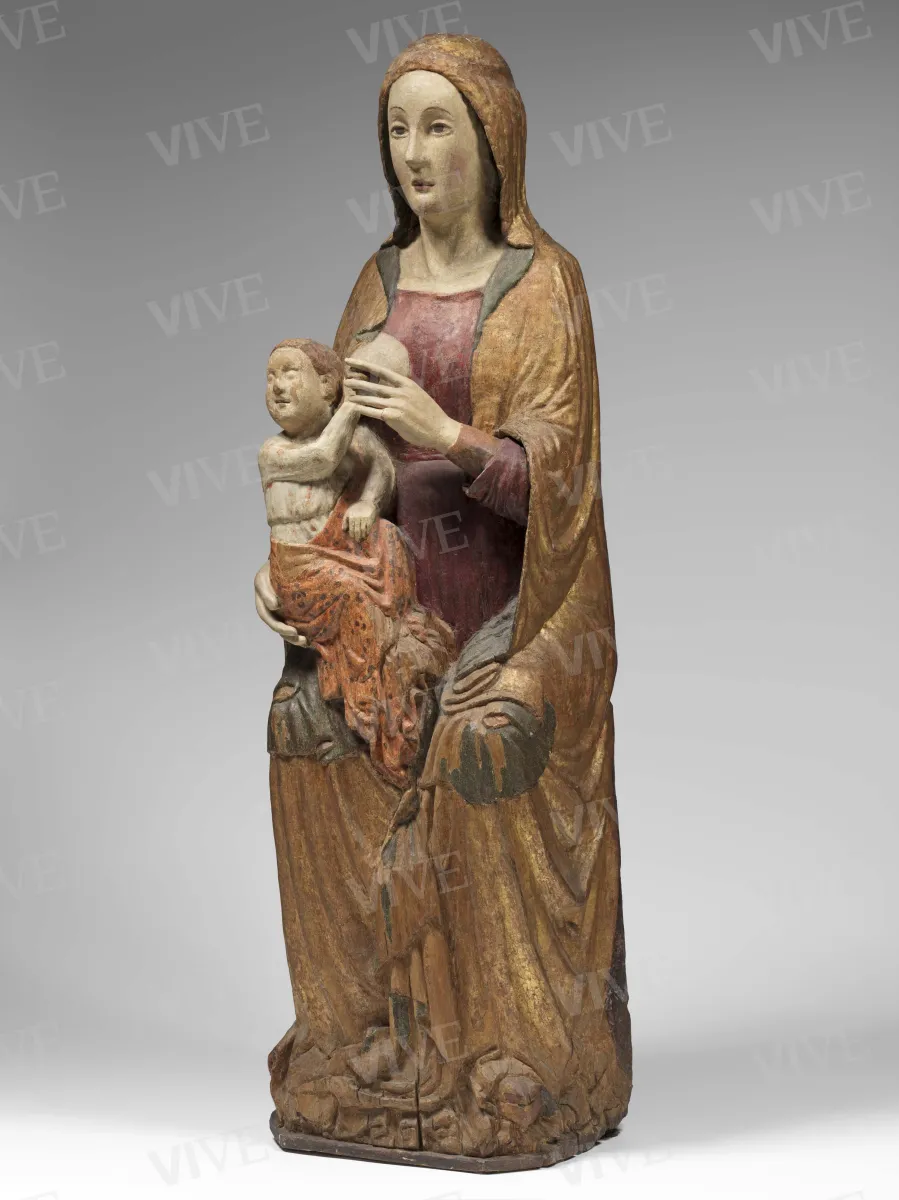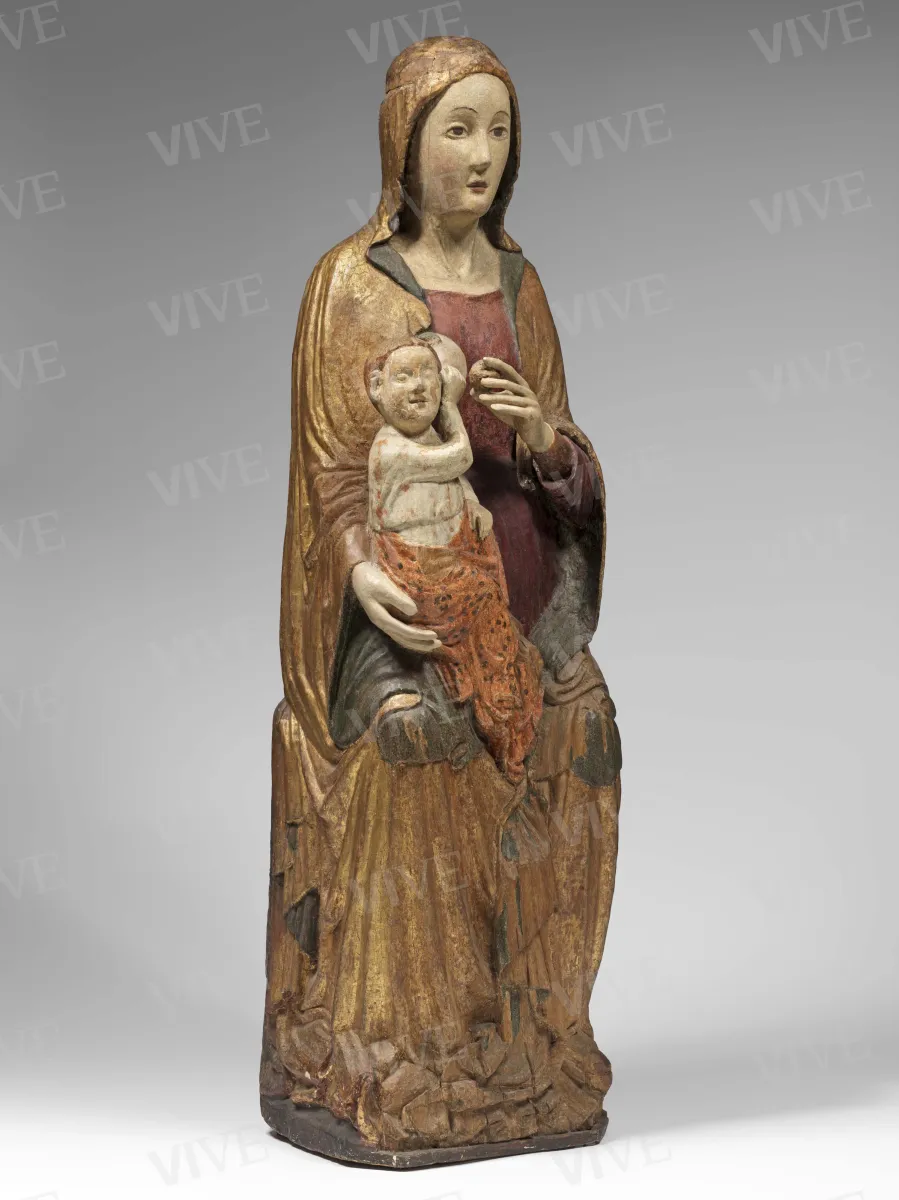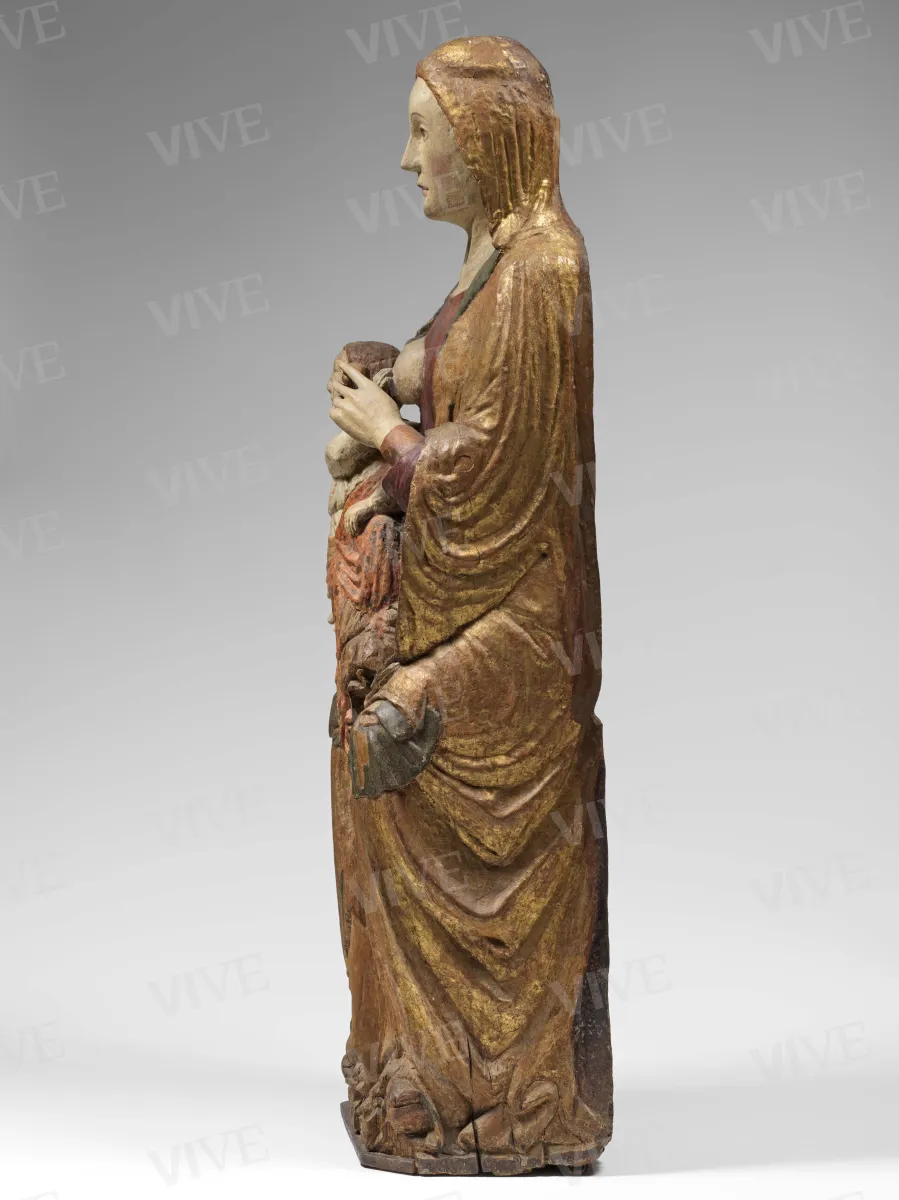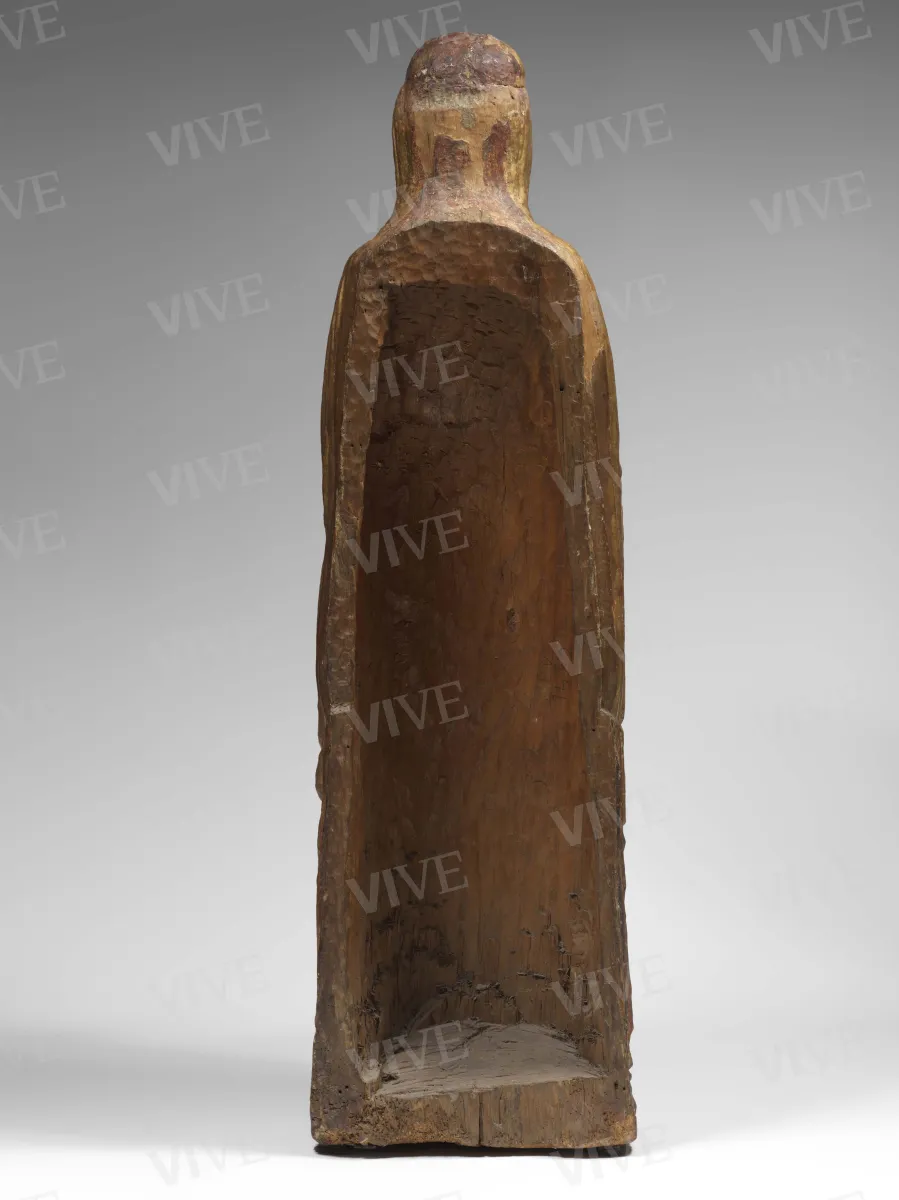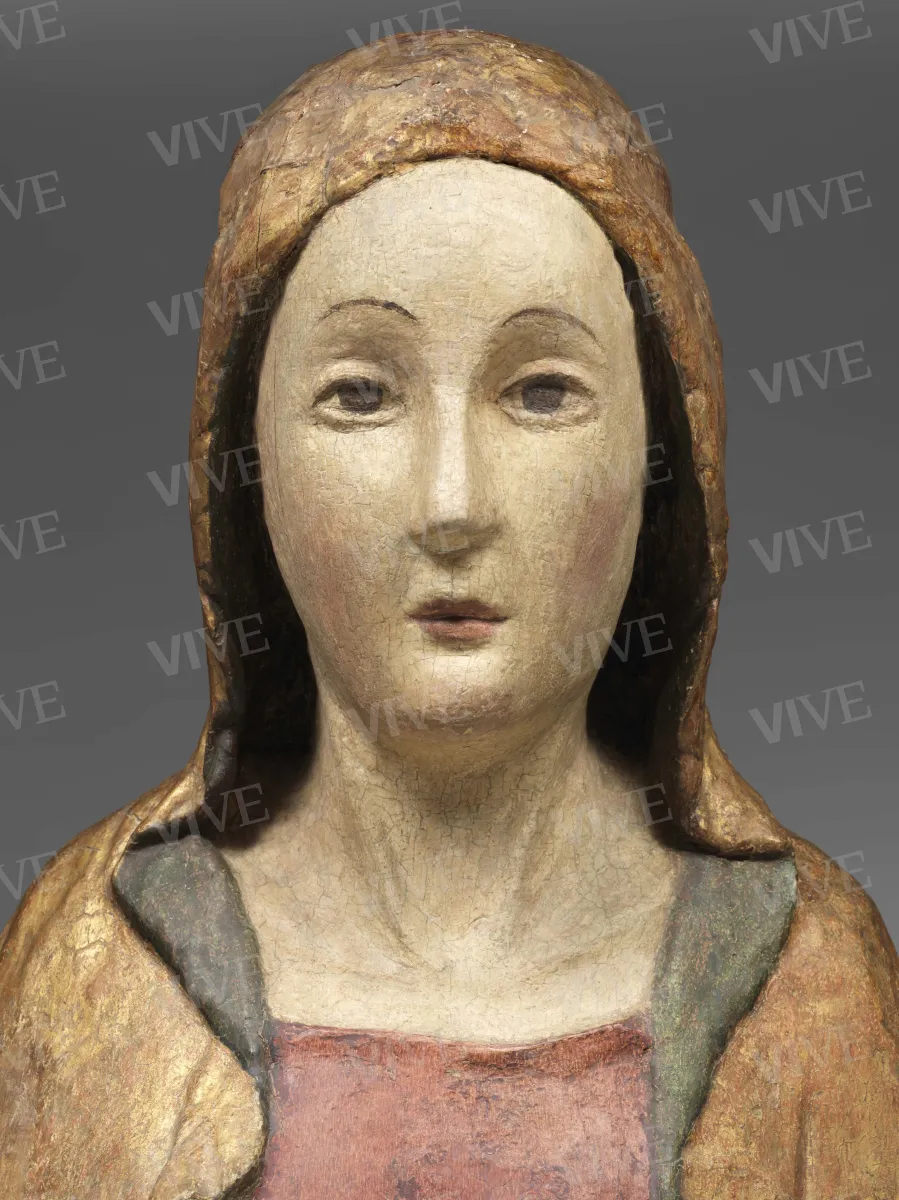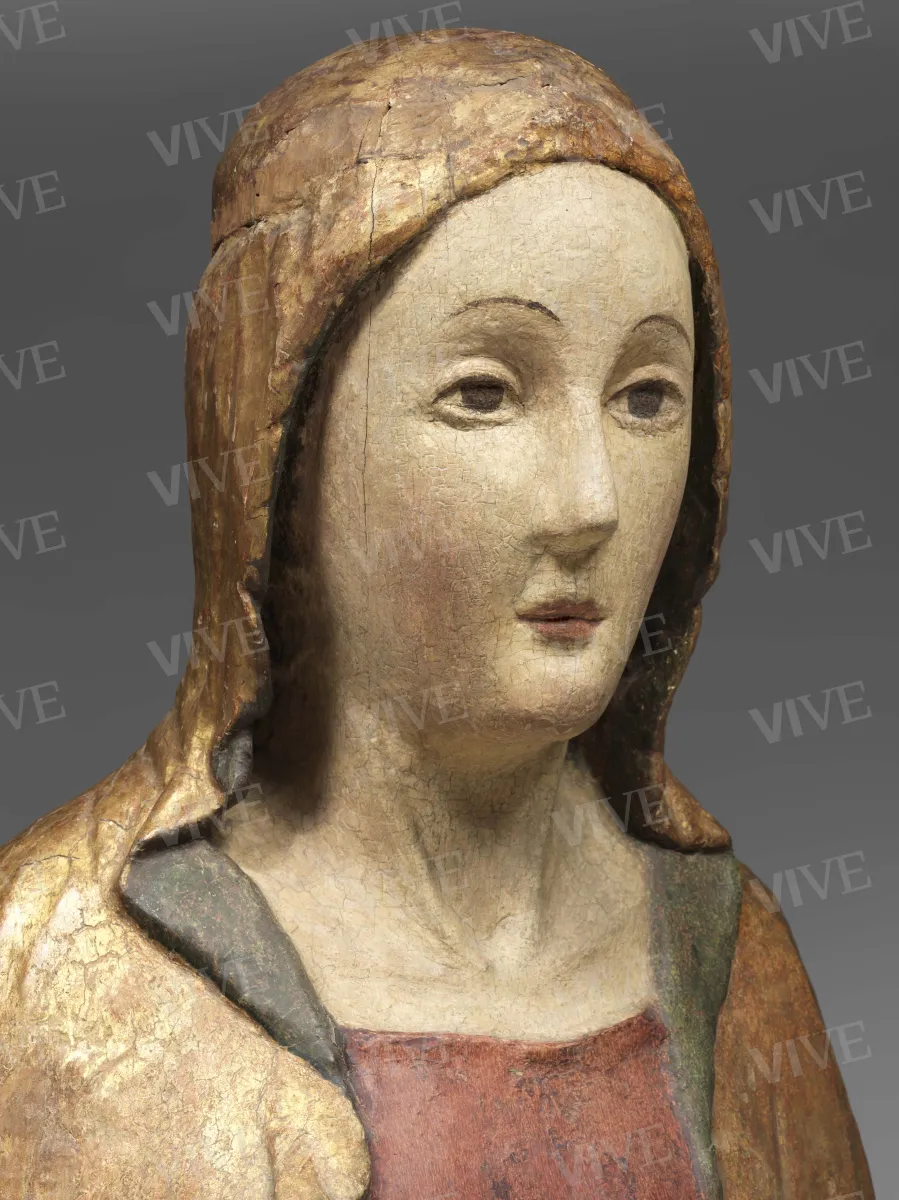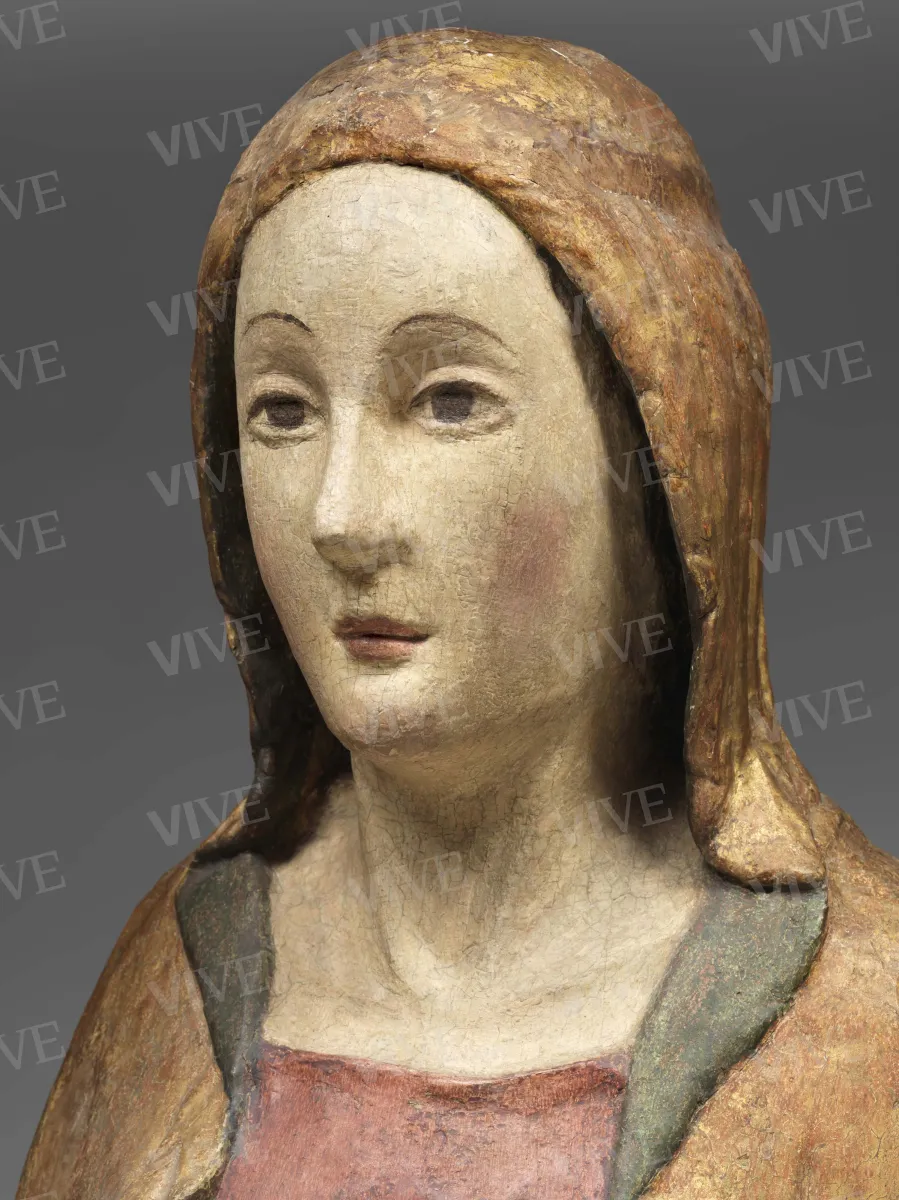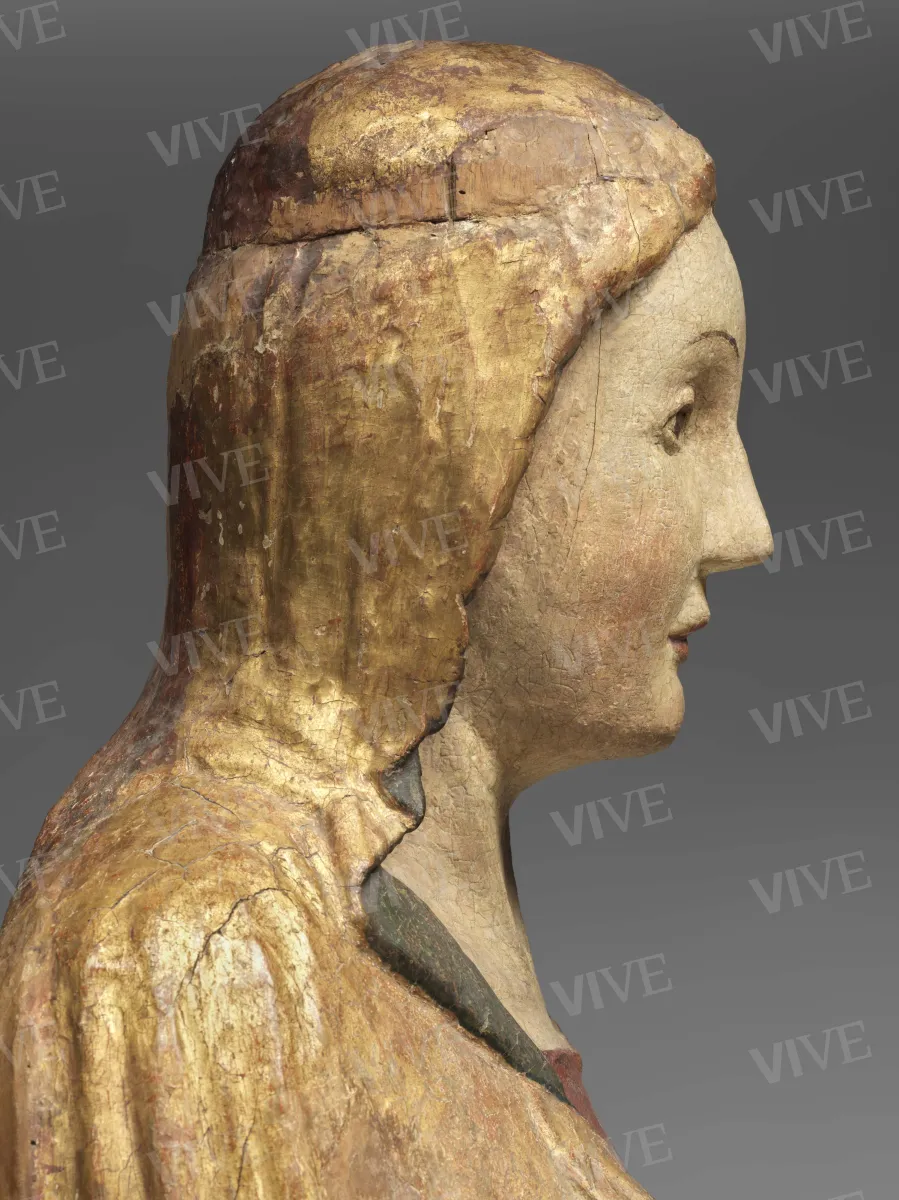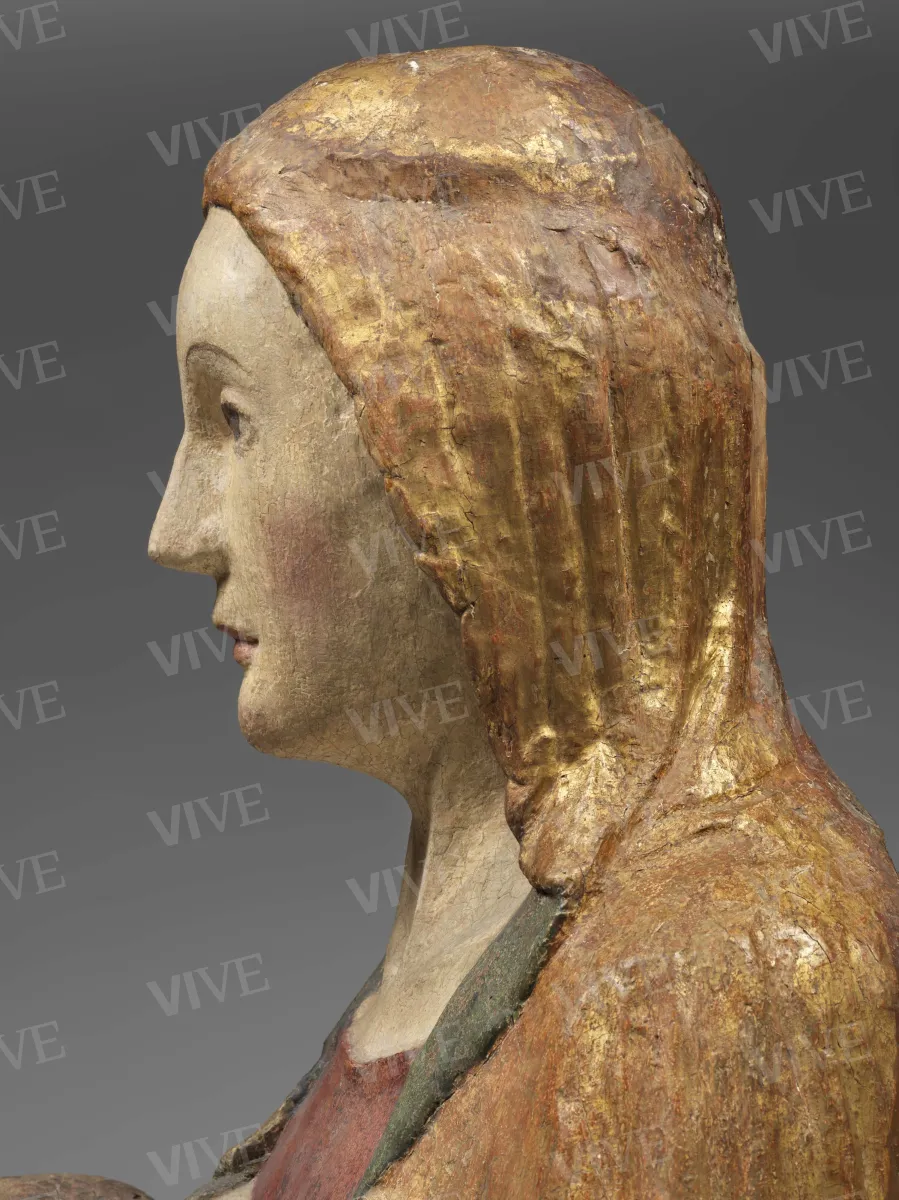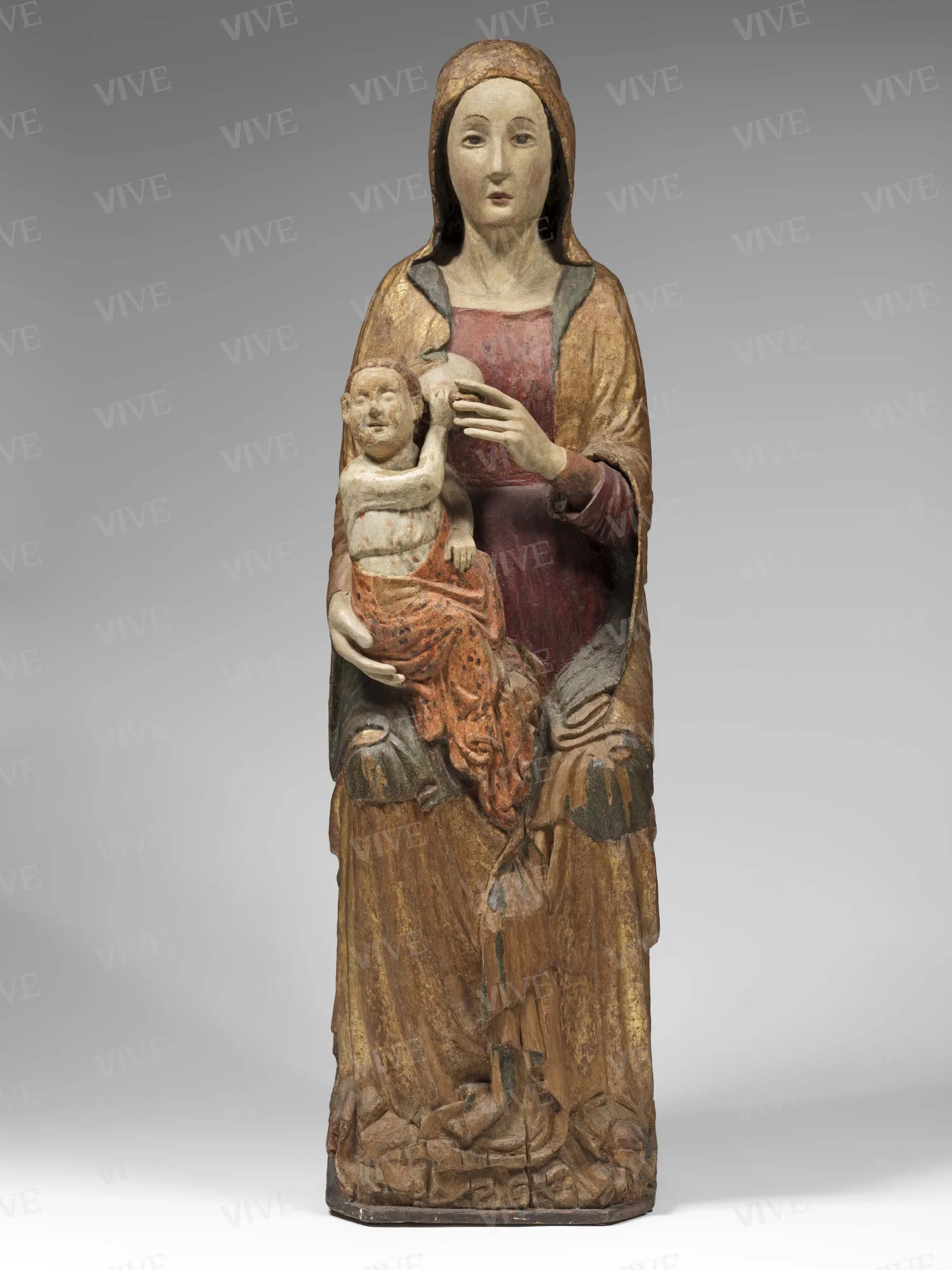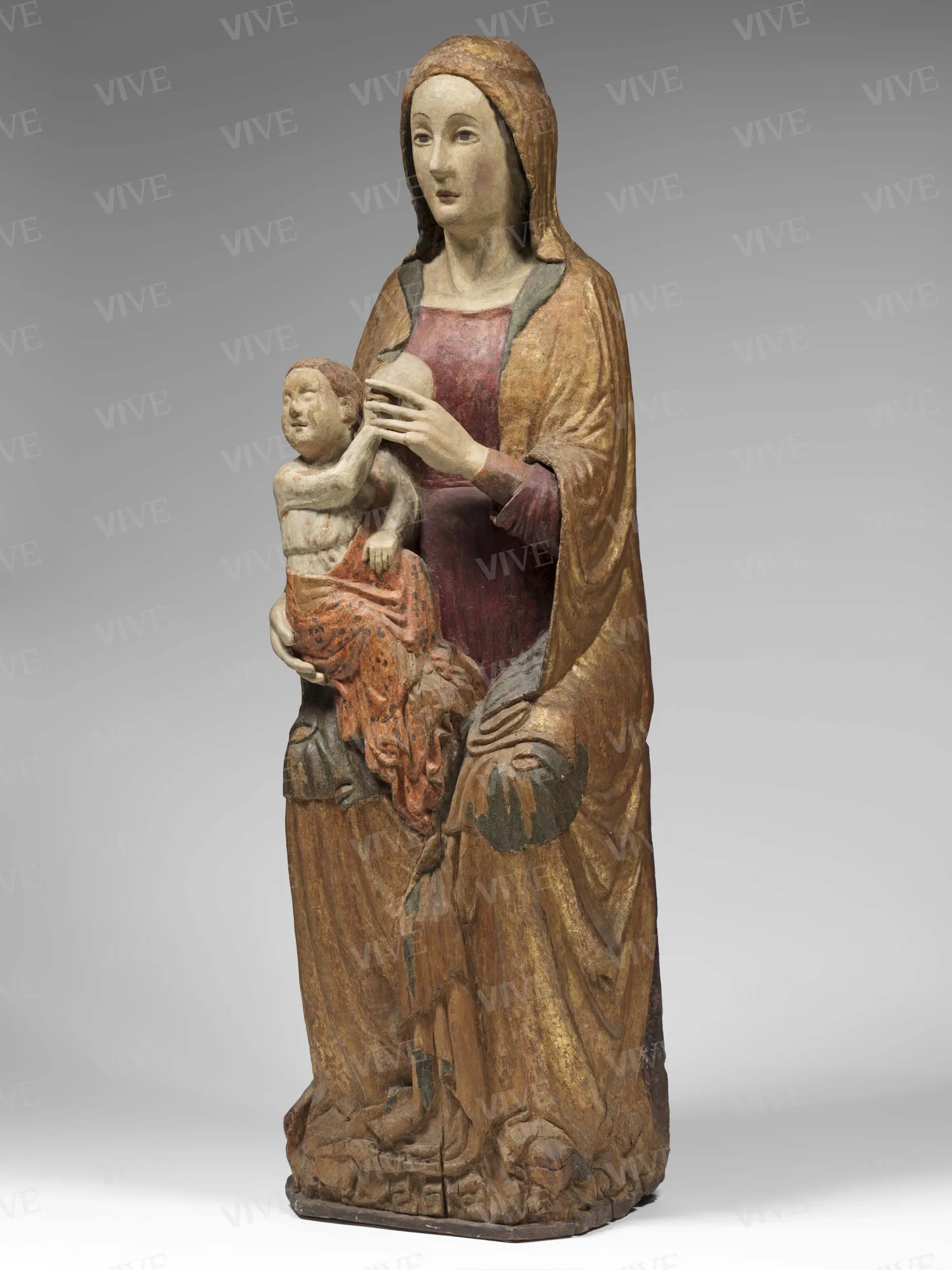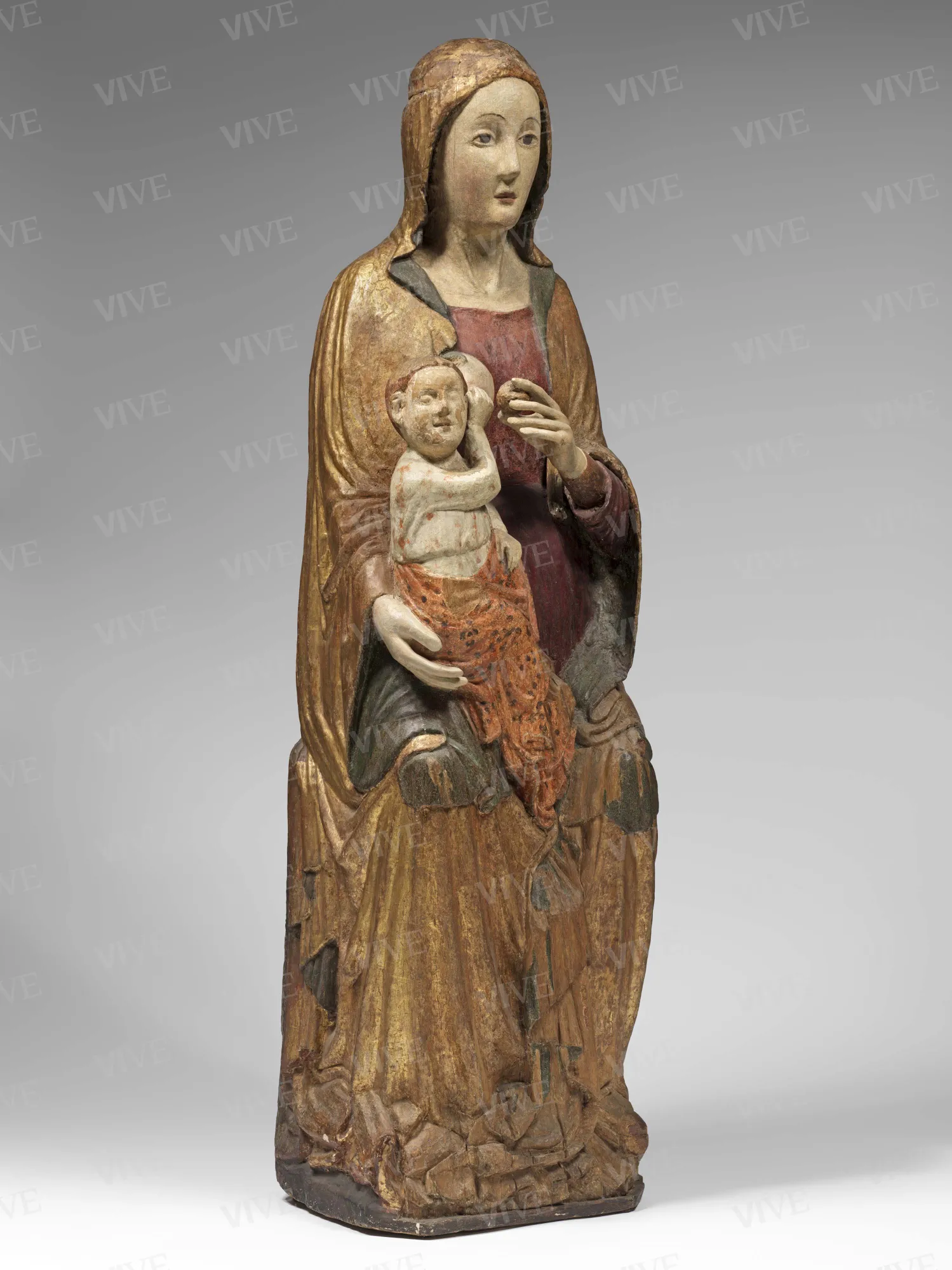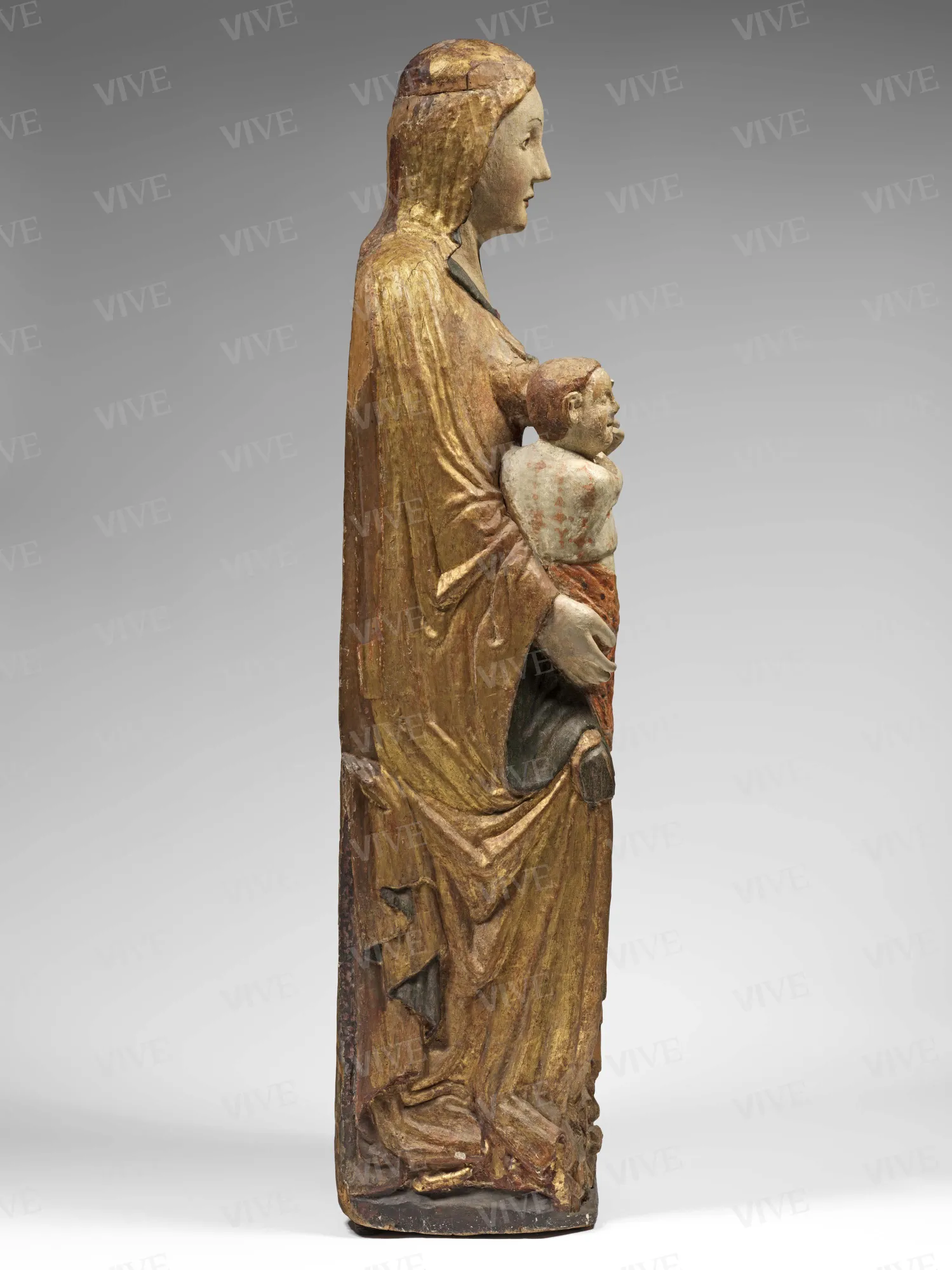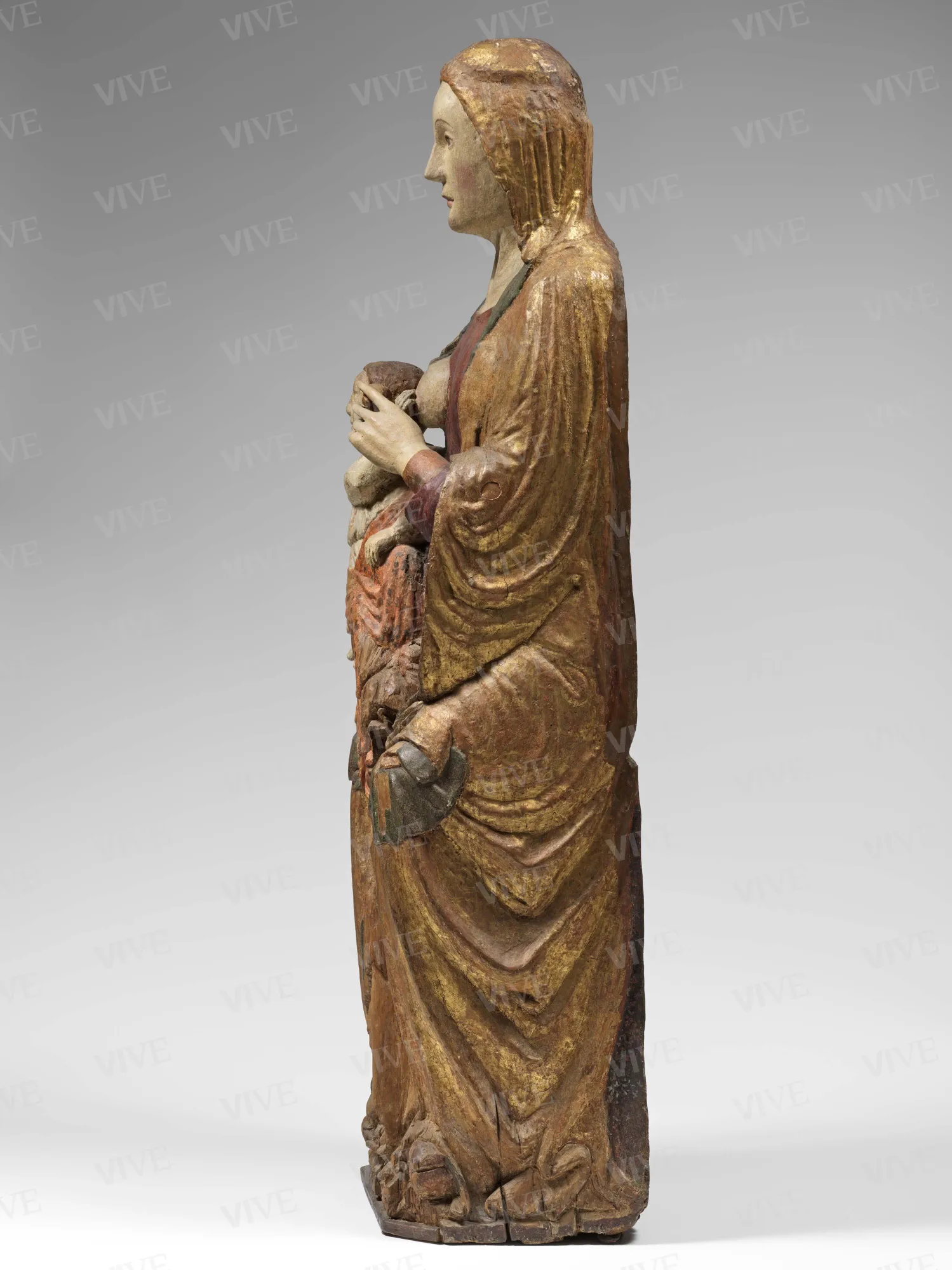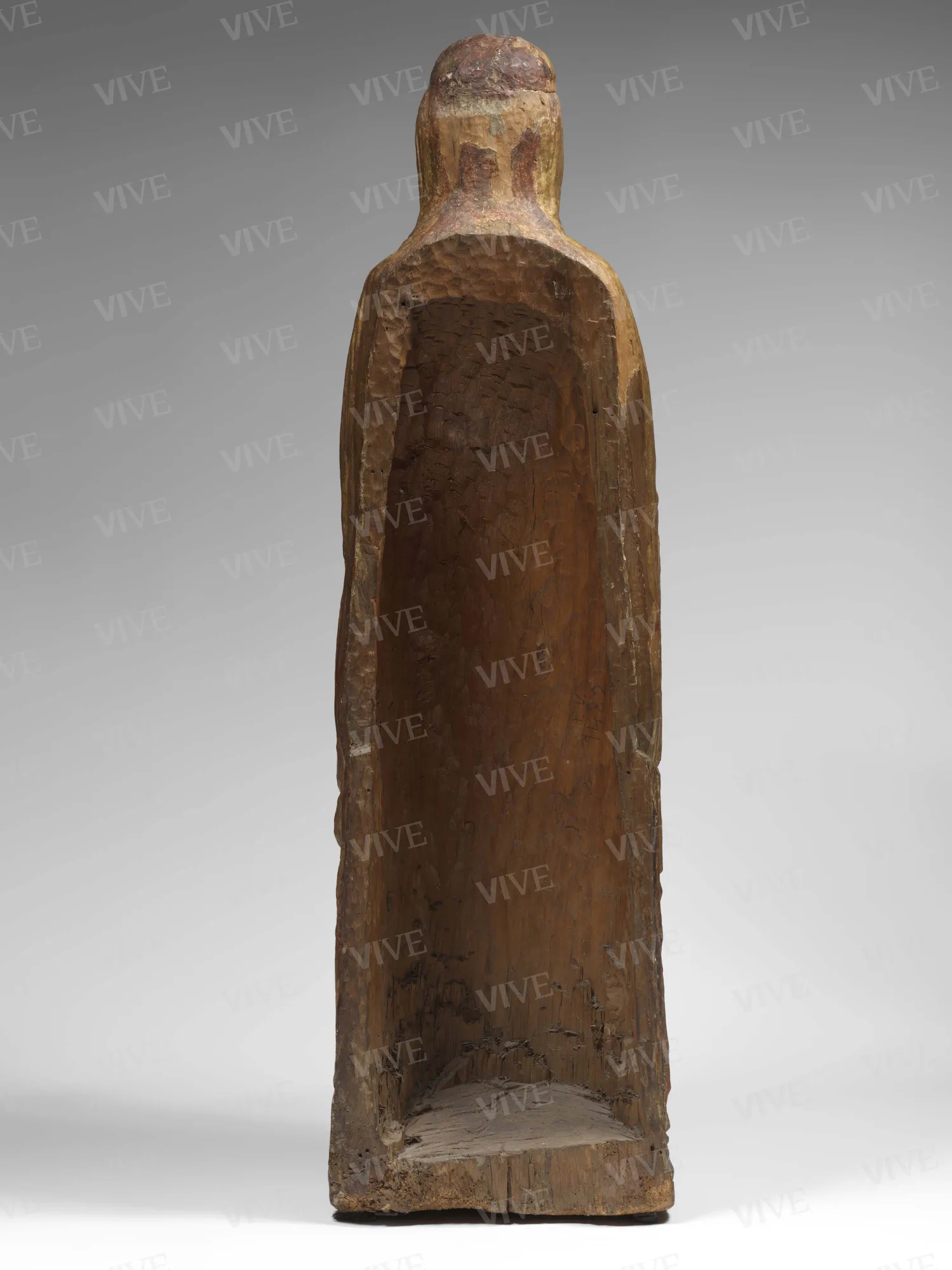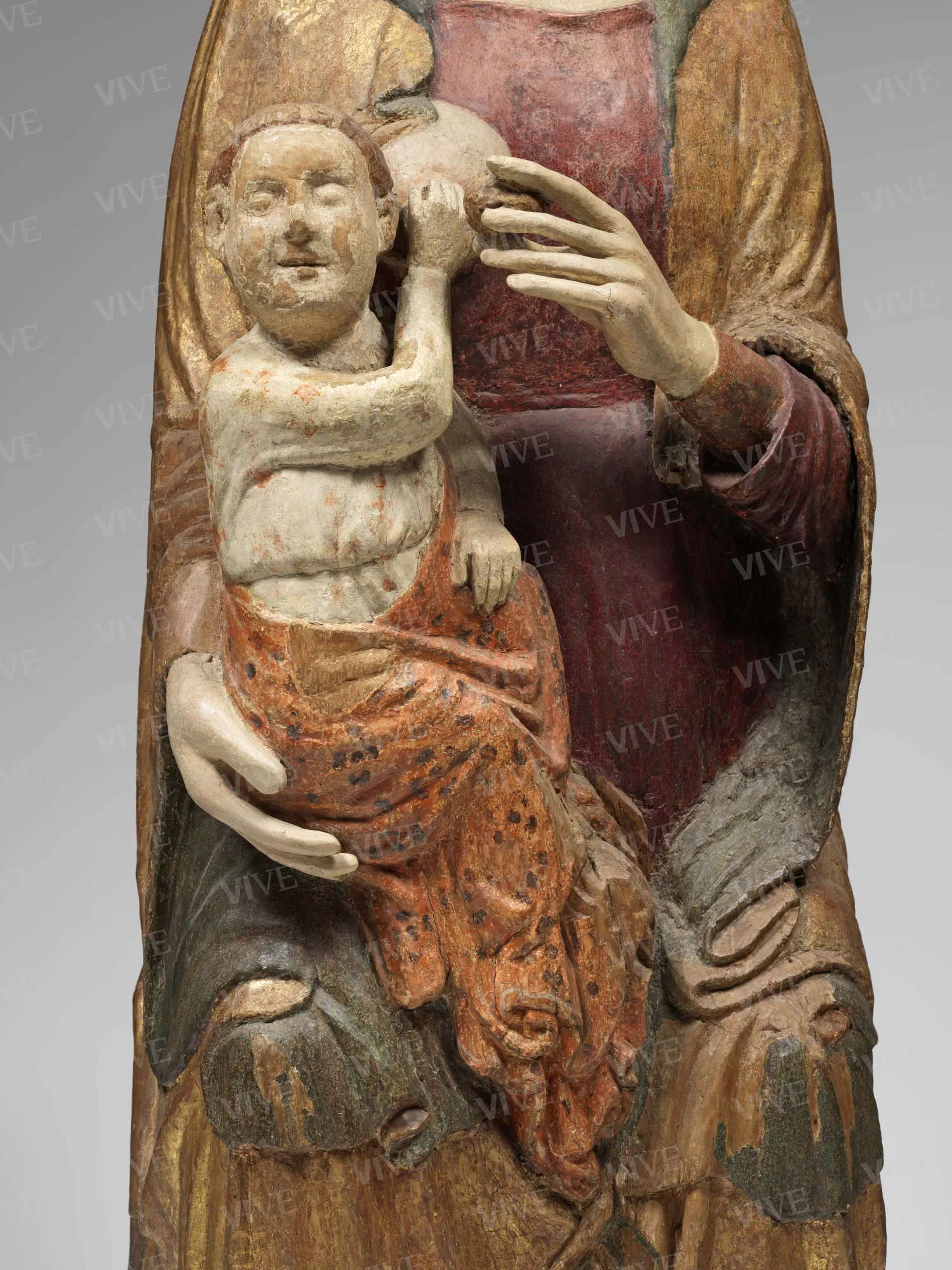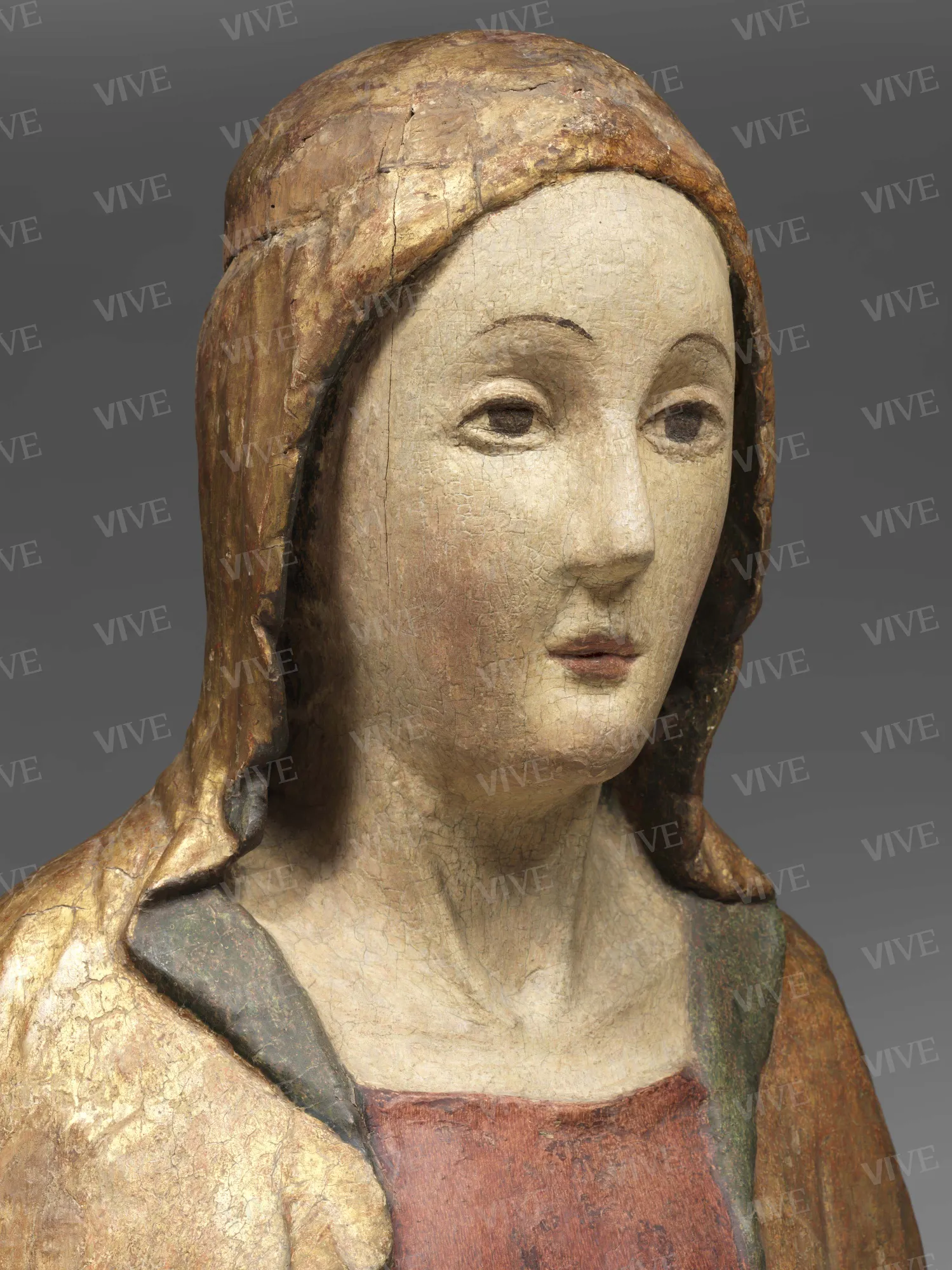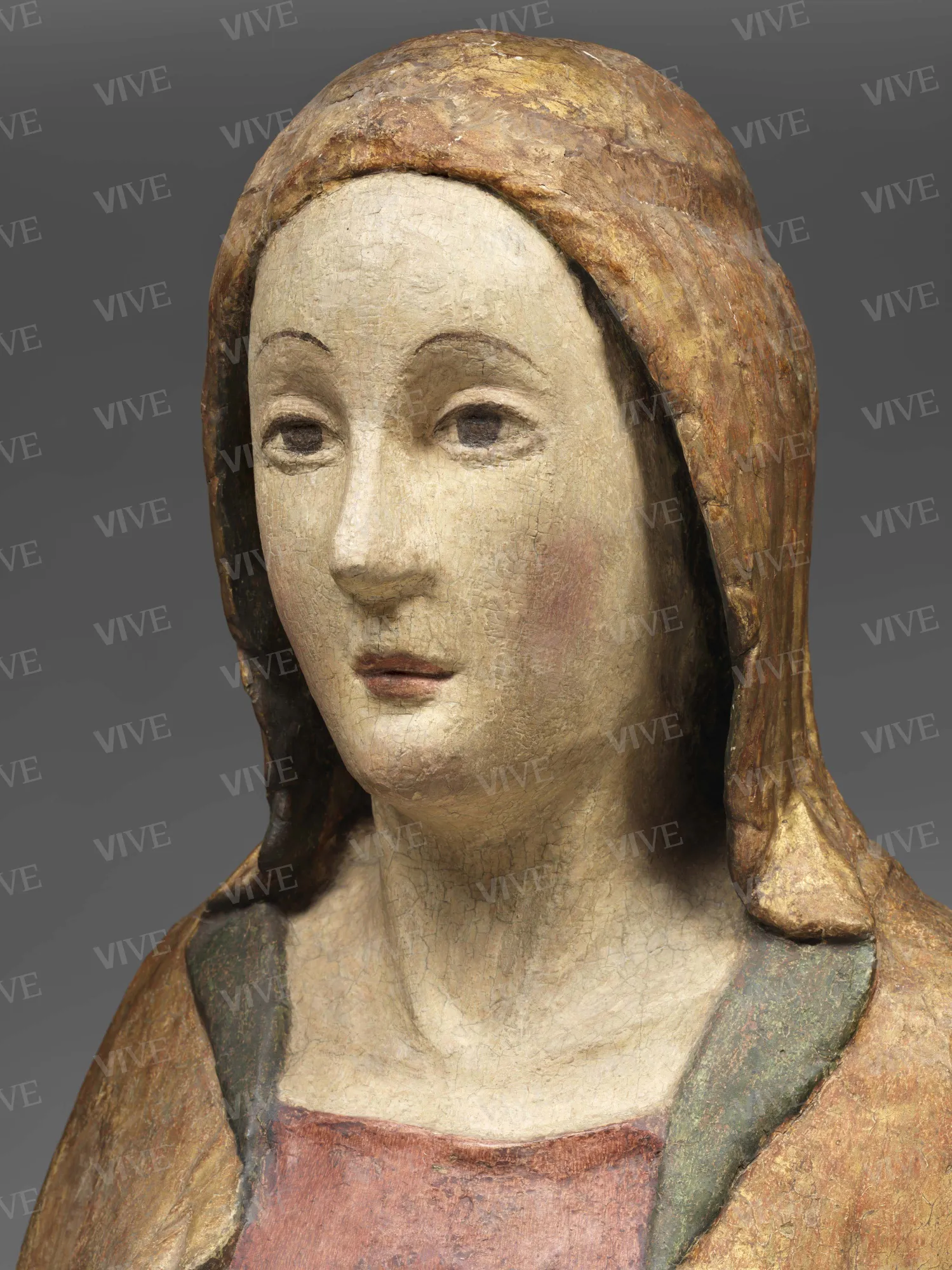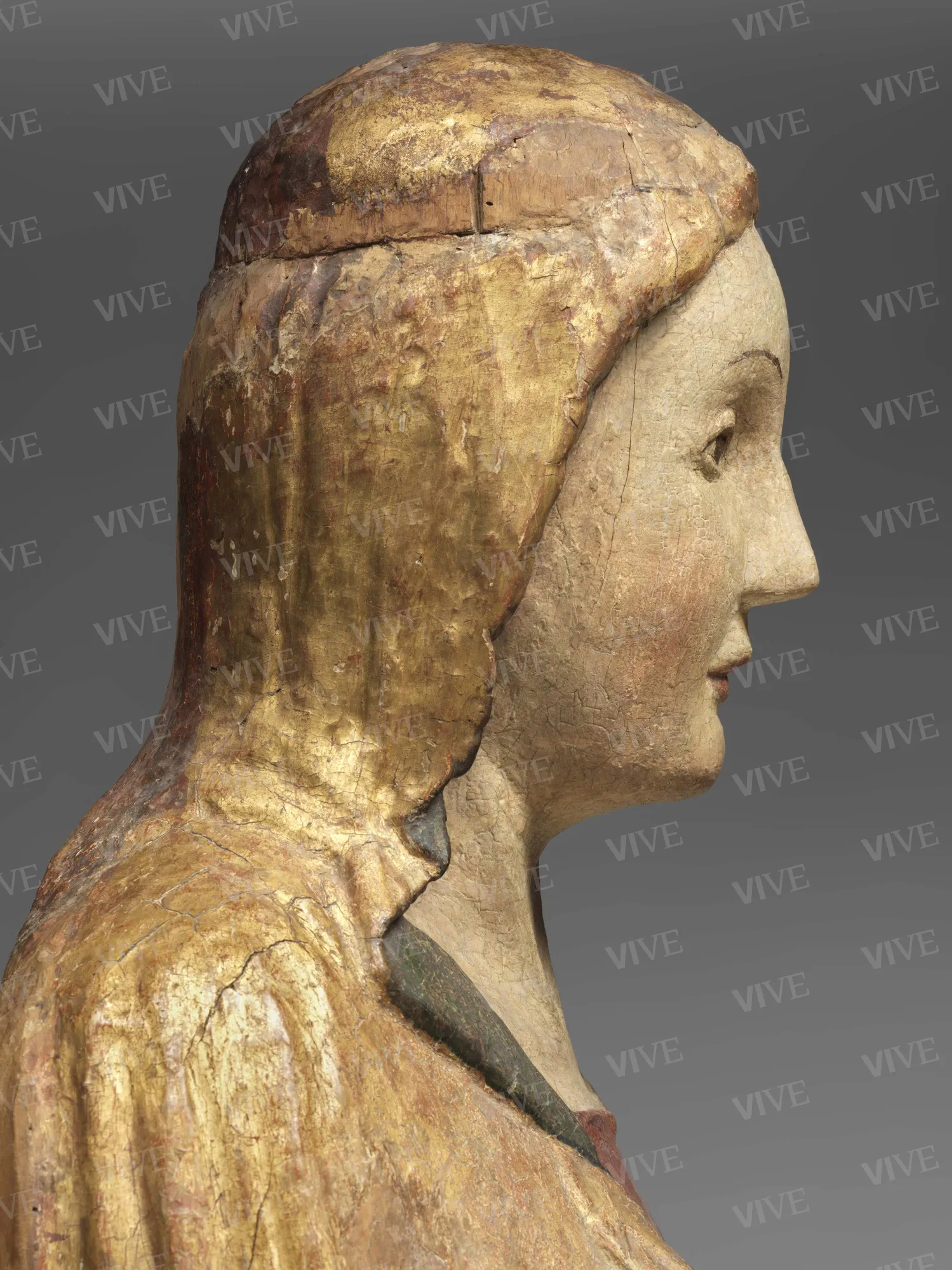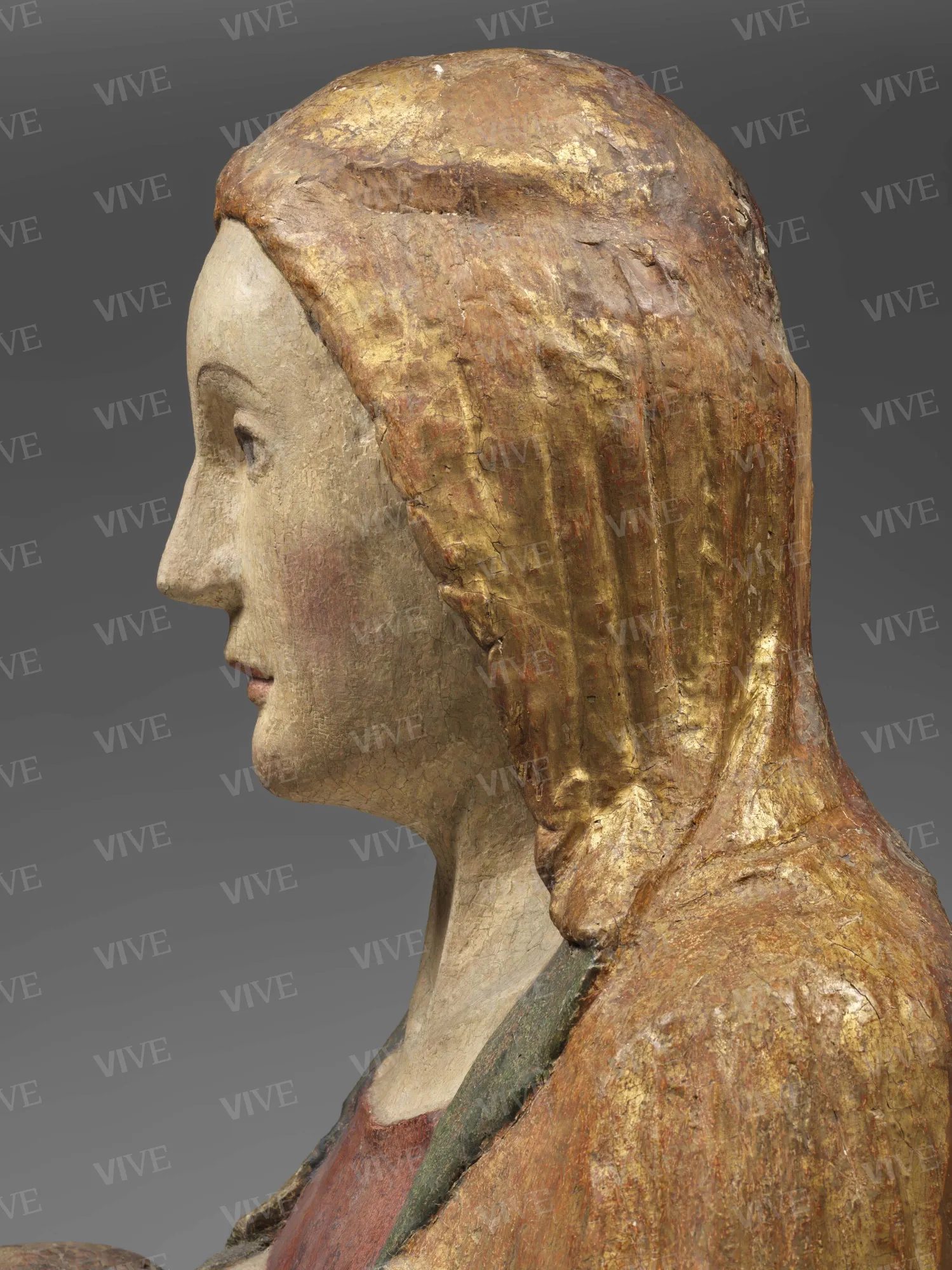Nursing Madonna
Unknown Second quarter of 14th century
The sculpture depicts an enthroned Madonna and Child while she is touching her uncovered breast, a characteristic iconographic representation of the so-called “Virgo lactans,” or nursing Madonna. The Child is seated on the Virgin’s right knee and facing the viewer, while the Virgin is portrayed frontally. The Virgin is clad in a green-lined golden mantle over a red tunic; the Child is wearing a white robe, his legs and hips covered by orange drapery. The back of the sculpture is hollowed out to make it lighter; there are signs of a probable, now-lost reredos.
The sculpture depicts an enthroned Madonna and Child while she is touching her uncovered breast, a characteristic iconographic representation of the so-called “Virgo lactans,” or nursing Madonna. The Child is seated on the Virgin’s right knee and facing the viewer, while the Virgin is portrayed frontally. The Virgin is clad in a green-lined golden mantle over a red tunic; the Child is wearing a white robe, his legs and hips covered by orange drapery. The back of the sculpture is hollowed out to make it lighter; there are signs of a probable, now-lost reredos.
Details of work
Catalog entry
The sculpture, originally held in the church of San Giovanni in San Demetrio ne' Vestini (L'Aquila) was purchased for the Museo Nazionale di Castel Sant'Angelo. It has been attributed to the Abruzzi milieu by Hermanin (1948, 267), while Santangelo (1954, 69) compares it with sculptures from the Marches. Fachechi (2011, 78–79), dates it to the third quarter of the fourteenth century, comparing it with the Saint Anthony Abbot at the Castello di Frontone. Even considering the cultural permeability between these two geographical areas in the Middle Ages, the presence of two important and authoritative iconographic precedents of the Nursing Madonna in the L'Aquila area makes it reasonable to assume that the San Demetrio ne' Vestini sculpture was executed in an Abruzzi workshop. The most significant iconographic precedents, from the point of view of devotional importance, are two thirteenth-century panel paintings: the earliest is the so-called Madonna "de Ambro" from the church of Santa Maria a Grajano di Fontecchio, now in the Museo Nazionale d'Abruzzo in L'Aquila and, also in the same museum, the panel from the church of Santa Maria ad Cryptas signed by Gentile da Rocca and dated 1283. Enzo Carli (1998, 70) is much more convincing in comparing the work to the Madonna and Child in the parish church of Roccacinquemiglia (AQ), dating it to the first half of the fourteenth century.
Stefania Paone
Entry published on 12 February 2025
State of conservation
Good; the work has lost some paint film and lacks the reredos it was originally intended to accompany. It was adorned with an unrelated crown, which has been removed and preserved.
Restorations and analyses
IVALSA-CNR, Florence, has identified the wood species (poplar).
Provenance
Church of San Giovanni Battista, San Demetrio ne' Vestini (L'Aquila);
Rome, Museo Nazionale di Castel Sant’Angelo.
References
Hermanin Federico, Il Palazzo di Venezia: museo e grandi sale; descrizione e catalogo dell’appartamento di Paolo II, Bologna 1925, p. 33;
Mariani Valerio, Sculture lignee in Abruzzo, Roma 1930, tav. 9;
Hermanin Federico, Il Palazzo di Venezia, Roma 1948, p. 267;
Santangelo Antonino, Museo di Palazzo Venezia, Catalogo delle sculture, Roma 1954, p. 69;
Carli Enzo, Per il "Maestro della Santa Caterina Gualino", in Studi in onore di Giulio Carlo Argan, 1, Roma 1984, pp. 59-63 (ripubblicato con aggiornamenti in Carli Enzo, Arte in Abruzzo, Milano 1998, pp. 65-81) ;
Fachechi Grazia Maria, Museo Nazionale del Palazzo di Venezia. Sculture in legno, Roma 2011, pp. 78-79.

